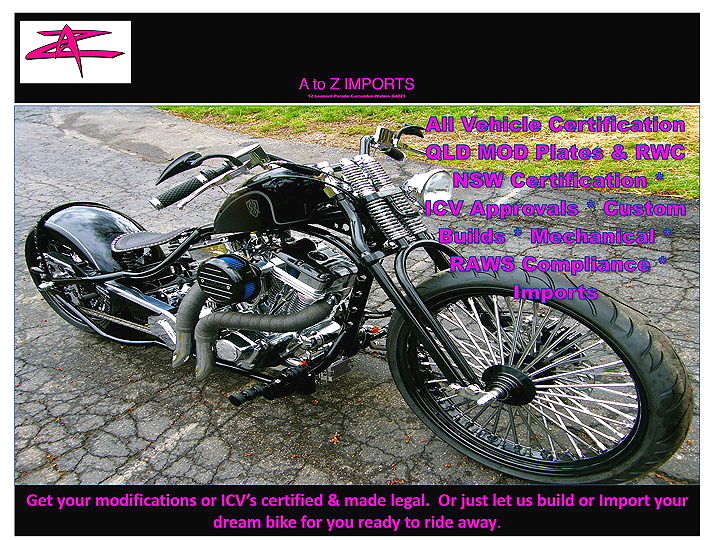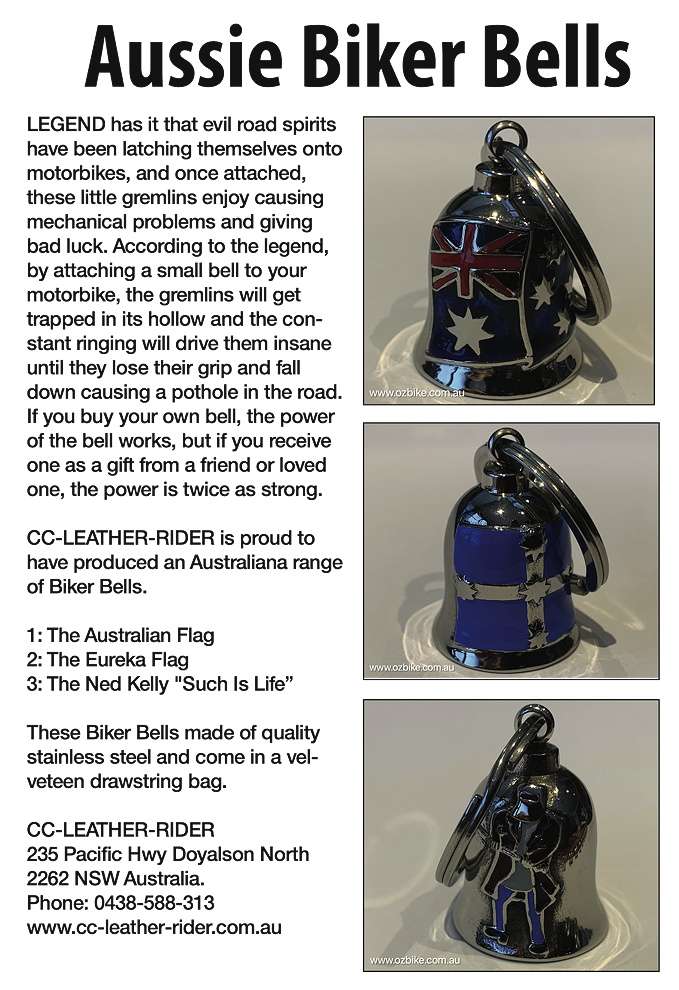Bobber Garage Harley-Davidson Sportsters
If you hadn’t noticed lately there’s been a big increase in people getting around on stripped down, basic cafe racers. Call it a return to simpler times or an emotionally charged blast down memory lane, either way, it’s paved the way for hipsters to replace their top knots (thank Christ!) with a helmet, and kick around on some very cool rides.
LOCATED DOWN in O’Conner just out of Fremantle is Mat Day’s workshop Full Throttle Power Sports which covers all things motocross and sports bikes supplying parts and dyno tuning. Being into bikes from an early age and basically having a life that revolved around racing and riding them with his mates, he saw a need in the emerging cafe style bike market and created Bobber Garage to build a few bobbers to prove you could have a pretty sweet bike on a fraction of the budget and still turn heads and take numbers.
“It seems everybody has in their mind if they want to build a custom bike it’s going to be 40 to 50 grand. Whereas I wanted to prove you can build them and have them out the door at 15.”
Saying that Mat knows there’s always more ways of spending money on a bike, but if you look at the two here, you can see what he’s done for minimal coin while really making a big impression. Coming into it with a notion formed by (unsurprisingly) most Japanese bike owners that Harleys were ‘unreliable oil leakers’, Mat found after building quite a few now that “they’re bullet-proof. They’re really hard to hurt as long as you maintain them.”
Raw Metal Sporty Bobber
Looking over the simple raw steel finish of this bobber first gives the impression it’s a nice, clean, simple setup. But look a little closer and things start to get interesting quickly.
“It first started out as an idea on how to get fuel injection onto a rigid bobber. The Yanks haven’t seemed to have mastered it yet as they can use a 2015 motor and pull the injection off and go straight for a carby. Why use a brand new motor and pull off all the injection? You’re only getting rid of all of the smoothness and the power. So I wanted to make it work.”
Mat started with a Led Sled frame “with a four-inch gooseneck, two-inch stretch, and sitting two inches lower. Unfortunately that threw us out of a belt so I had to go with a chain drive, which then necessitated the need for the chain tensioner as the rear guard is welded straight to the frame. If your chain stretches and you have to move your wheel back, your rear guard doesn’t go anywhere, so the tensioner is needed to take up the slack.”
A Monster chain tensioner wheel and arm was used with the new frame.
Motor-wise, Mat started with a 1200 Sporty power-plant with a Stage Two Screamin’ Eagle cam kit, cleaned up the heads and a tidy up here and there.


A Roland Sands velocity stack was bolted on along with some self-made two-inch wrapped stainless steel pipes, and once thrown up on a dyno, this combo made an honest 85 RWHP. More than enough to get into mischief.
Using a Nash Motorcycles ‘Juice’ bag normally designed to house a battery, Mat set about converting it to house a ThunderMax computer to “get around the Harley security module” while also allowing a spot for the ignition key barrel and Moto Gadget digital dash display-cycling button and control module. A very clever way to hide away all the spaghetti normally associated with modern mills, while also adding to the retro look of the bike.



More work went in to “machining the front guard hubs off the forks so it makes it look like it had no front guard to start off with.”
Led Sled supplied one of their ribbed oil tanks and the rear guard; the fit of both being better than factory with the tolerances on the guard being closer than what you’d expect.
“Each one of them is hand-made so you have to give them the tyre specs for the brand of tyre you’re going to use and it is made to suit that tyre, and I found out the hard way that no other tyre fits. So this one will be using Dunlop tyres until the day it dies!”
The seat is also from Led Sled who make the pan and then send it to their upholsterer. He just seems to have the white beading sussed.
“I got the tank through Lowbrow Customs which are made for a carb’ed bike so I had to cut and weld a plate in the bottom to handle the fuel pump and mounting brackets.”
Performance Machine four-spot brakes were bolted to the 16-inch rear wheel while the front stayed 21-inch 2009 Harley.
“All the remaining electronics on the bike are Moto Gadget. The German stuff just doesn’t break, doesn’t fail. It’s bloody expensive but bloody good.”


Keeping the electronic theme going Mat used a Moto Gadget digital readout located in the top of the handlebar clamp along with all the relevant warning lights. Clean, simple and effective which sums up the bike all over.
The Greenie Harley-Davidson Sportster
“GREENIE started with the idea to build a cheap custom bobber to be sold as a semi-new bike, but just as we started it we got told about the roof-top bike show coming up, so as usual, we got a bit carried away and just kept putting more dollars into it.”
Starting out with a Sportster 1200, Mat wanted to build something more traditional as far as bobbers go with a low stance and old school non-chopper look. After pulling the engine apart, he “went to town on the heads and gave them a port and polish, oversized the valves, did the cams, flat-top pistons, which made it a lot more zippy.”
Keeping the standard CV carb for smoother cruising, Mat rebuilt it and put it on the dyno for a tune eventually putting out 88 RWHP.
Again Mat built a pair of stainless steel heat-wrapped pipes to suit the look of the bike.
Led Sled were again called on when it came to using the standard Harley frame, but this time only the rear was touched converting it with one of their hard-tail conversion kits.
“They’re a rock solid kit using a huge gauge on their steel and spigots that slot nicely into the frame before TIG welding all the joints and machining it all back ready for powder-coating.”
A black and gold series 530 EK chain was used as “it’s the heaviest duty, lightest chain on the market, but I didn’t actually buy it for that — I bought it because it was the best looking chain on the market.”
A Led Sled guard and oil tank were used again but this time Ryan from Custom Modifications in Malaga got to spray on some colour.
“Pretty much any idea I seem to come up with he knows exactly what I’m thinking and puts the paint to the skin.”
After Ryan was done, Travis from Pin Head Kustoms stepped in and did the sign writing and pin-stripes.
“He is probably the most unbelievable freehand pin-striper I’ve seen in a long time.”



Recessed into the standard Sporty headlight you’ll find a Moto Gadget digital readout again which Mat sunk into the bucket before powder-coating it all black.
Moving back along the handlebars are a set of very tidy Moto Gadget switchgear controlling all the electrics in the bike. You’d be forgiven if you didn’t notice them the first time as they blend seamlessly into the space next to the hand grips.
Wiring from these is a single wire to a control box making wiring a breeze and allowing a much smaller loom to be easily hidden away.
A hand-made Led Sled springer front-end was slotted into the standard Harley steering tube to control the 19-inch front wheel. You’ll find a 16-incher out back, both with a thick white-walled Dunlops and powder-coated black spokes and rims.
Performance Machine brakes where again used, this time on both front and rear. Given the natural tendency for a springer front-end to virtually lose all bump absorption and turn solid when the front brake is applied, a better than standard rear brake is needed and used much more often.
To reduce the clutter of the necessary-but-normally-ugly park/ brake/indicator lights, Mat sourced a set of Rizoma LED lights. The two rear housings each contain all three lights placed on the frame forward of the rear axle. These are incredibly bright being “the world’s smallest integrated LED tail-light, and are actually the only legal ones too. The Moto Gadget control module controls them all which is about the size of a pack of smokes hidden behind the battery.”
A Led Sled seat was again supplied with its white piping matching the white-walls and pin-striping.



When it came to riding Greenie it was surprising good.
“Everybody has got in their mind that riding a rigid you’re going to feel every last little bump on the road, but the seat surprisingly takes up all the jarring so you only feel something if it’s like a two foot deep pothole in the road. I’ve tried using the mini shocks on the seat before but keep coming back to the springs. The problem with the shocks is after every bump in the road there’s a second bump from where cars have bounced. The seat shocks take up the first bump but when you hit the second bump you’re still compressed so you are fully rigid and that’s where you smack your spine. Whereas the springs just keep bouncing along like a pogo stick and you don’t feel anything.
“As far as the springer front goes they’re great for around town and sub-100 kay speeds, which is what the bike is built for anyway.”
Thanks goes to Ryan at Custom Mods for “thinking what I’m thinking”, Michael Colburn for “his help in pulling the bikes apart and being the muscles when I need it”, and finally Dad for “being the bad habit that got me started on these things.”

Words & Photos by Brad Miskiewicz



